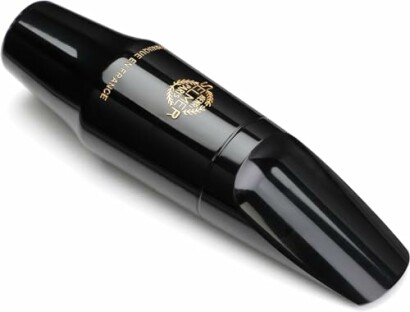
Choosing the Right Mouthpiece for Your Tenor Saxophone
Key Takeaways
- The mouthpiece significantly influences your tenor saxophone's sound and playability.
- Understanding your playing style will help in selecting the right mouthpiece.
- Consider materials, tip opening, and facing length when choosing a mouthpiece.
- Experimenting with different mouthpieces can enhance your sound.
- Products like the Selmer S-80 C* Mouthpiece and Vandoren SM823E T7 Mouthpiece are popular choices.
Selecting the appropriate mouthpiece for your tenor saxophone is crucial to shaping your sound. The mouthpiece impacts your tone, volume, and articulation, making it essential to find one that complements your unique style. Let's delve into the different aspects of mouthpieces and provide guidance on choosing the best one for your musicality.
Understanding Mouthpiece Types
Mouthpieces come in various shapes, sizes, and materials, each contributing to a different sound profile. Here are the main types:
- Rubber Mouthpieces: Known for their warm and rich tone, rubber mouthpieces are excellent for jazz and classical music.
- Ebonite Mouthpieces: These mouthpieces provide a darker, heavier sound and are popular among advanced players.
- Metal Mouthpieces: Typically louder and brighter, metal mouthpieces can project sound in big bands and orchestras.
Mouthpiece Specifications
When selecting a mouthpiece, consider the following specifications:
| Specification | Description |
|---|---|
| Tip Opening | The distance from the table (flat part where it rests on the cork) to the tip of the mouthpiece. A wider opening allows for more air, producing a louder sound but requiring more control. |
| Facing Length | This is the length of the mouthpiece that the reed touches. A shorter facing allows for rapid articulation, while a longer facing provides a smoother sound. |
| Material | Material affects the tonal quality. Rubber offers warmth, ebonite gives a darker tone, and metal produces brightness. |
Choosing the Right Mouthpiece Based on Your Playing Style
Your playing style and music genre play a crucial role in determining the right mouthpiece. Here are some tips:
- Jazz Musicians: Often prefer rubber or ebonite mouthpieces for a warm tone.
- Classical Players: Look for mouthpieces that provide a clear, focused sound; ebonite is often favored.
- Pop and Rock Players: Might opt for metal mouthpieces for their bright and powerful sound.
Popular Mouthpiece Recommendations
Here are two mouthpieces highly recommended for tenor saxophone players:
Selmer S-80 C* Mouthpiece for Tenor Saxophone
This mouthpiece features a square cross-section in the chamber and is perfect for stepping up your sound with a tip opening of 1.8.
Learn MoreVandoren SM823E T7 V16 Ebonite Tenor Saxophone Mouthpiece
A great balance between ease of sound projection and timbre with a tip opening of 270, this mouthpiece works best with Vandoren #2.5-#3.5 Reeds.
Learn MoreTips for Testing Mouthpieces
Beginner Section
- Visit a music store to try out different mouthpieces.
- Bring your saxophone along to test how they feel and sound.
- Take note of your comfort level and how easy it is to produce a desired tone.
- Consider borrowing mouthpieces from other saxophonists to see what you like.
- Keep an open mind; your preferences may change as you improve!
Maintenance and Care of Your Mouthpiece
Proper maintenance extends the lifespan of your mouthpiece and ensures optimal performance:
- Regularly clean the mouthpiece with warm water and mild soap.
- Use a flute cleaner to remove any debris or buildup from the inside.
- Inspect your reed for wear and replace it as needed.
- Store your mouthpiece properly when not in use to protect it from damage.
Conclusion
Choosing the right mouthpiece for your tenor saxophone can greatly enhance your playing experience and sound quality. By understanding the different types and specifications, considering your playing style, and properly maintaining your mouthpiece, you can elevate your musical performance to new heights. Don't hesitate to try various mouthpieces until you discover the perfect match!

